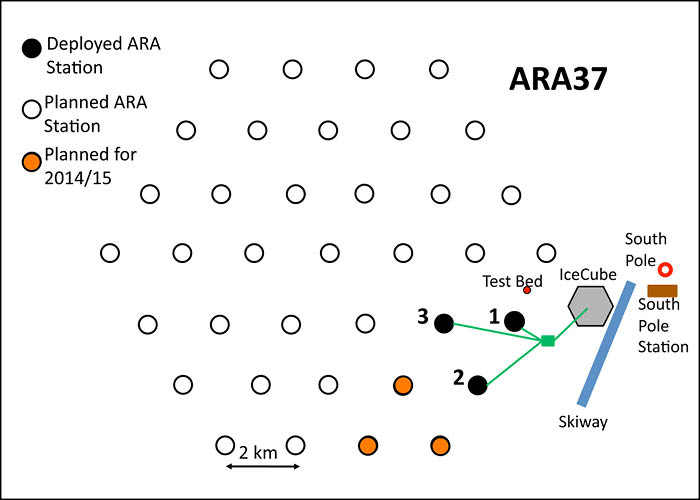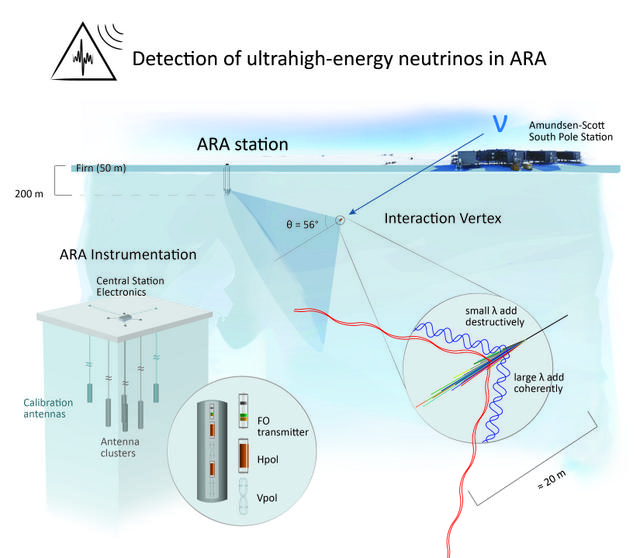The Askaryan Radio Array (ARA) is an extremely large neutrino detector under construction near the South Pole. ARA is designed to detect and measure high-energy neutrinos from space by observing the radio pulses they generate as they travel through the ice. The detector elements are buried in the ice, about 200 meters (669 feet) deep. The radio pulse comes from the so-called Askaryan Effect in which a shower of particles in a dense material coherently emits radio frequency energy. This effect has been observed experimentally, and the ARA collaboration hopes to use the detector to make a groundbreaking measurement of the highest energy neutrinos.
News:
ARA presents first results with two complete radio stations
The ARA Collaboration meets in Madison
First search of ultra-high-energy neutrinos in ARA

Recent Publications:
Performance of two Askaryan Radio Array stations and first results in the search for ultra-high energy neutrinos, arxiv.org
On the feasibility of RADAR detection of high-energy neutrino-induced showers in ice, Astroparticle Physics 60 (2015) 25-31, sciencedirect
First Constraints on the Ultra-High Energy Neutrino Flux from a Prototype Station of the Askaryan Radio Array, arxiv.org

